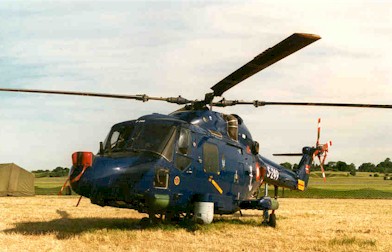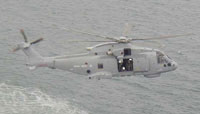|
You are here: 4Naval Aviation |
|||||||||||||||||||||||||||||||||||||||||||||||||||||||||||||||||||||||||||||
|
Naval Aviation (1912- ):Danish Naval Air Service
A low flying H.M. II (HEINKEL H.E.8) passing three
DRAGEN Class
torpedo boats during a naval exercise in 1939. By Johnny E. Balsved/translated by L.-H. Kongsbak Arvedsen As early as August 1910 the Ministry of the Navy had begun investigation of using aeroplanes in the Navy, this happened less than 4 years after Ellehammer at the 12th of September 1906 had made his first 42 meters jump in the air on the island of Lindholm. Forward looking naval officers apparently had a sense that the use of aeroplanes could strengthen the Navy and help it to carry out its tasks. Several of the officers of the navy had from the outset been participants in establishing the Aeronautical Society in 1909. Time of pioneering On March 25th 1912 the General Consul Ludvigsen, who was interested in airplanes, purchased a plane used by one of the pioneers of flying Robert Svendsen, a Henry Farman type aeroplanes, and donated it to the Navy.
Ulrich Birch made his own personal plane available to the Navy, it was given the name ØRNEN (The Eagle). This was to have a very shot service career however. In October that same year the plane crashed, and Birch later died of his injuries. The Air Service had for at start been located in the north eastern corner of Kløvermarken which was the field used by the aviation community - today part of Copenhagen city. Guarding neutrality When World War 1 broke out in August 1914 the Navy had at its disposal two seaplanes, MAAGEN 1 & 2, as well as 5 aviators, but even before the outbreak of war exercises of operative character had been carried out.
The project was an improvement on the earlier delivered French Donnet-Leveque seaplanes. August 22, 1914 the Naval Dockyard was allowed by the Ministry for the Navy to begin production of the new seaplanes - later designated F.B. II.
The new seaplane station - later
named "Luftmarinestation København" Around April 20th the work on establishing a seaplane station on an infill area just east of Nyholm (part of the old Naval Base Holmen) called Margretheholmen was so advanced that the seaplanes could be moved to this facility from Kløvermarken. The new seaplane station - later called "Luftmarinestation København" (Naval Air Station Copenhagen), was extended many times and was used as base for the seaplanes as long as the Naval Air Service existed until 1950. The Navy's squadron in Storebælt (Great Belt) needed seaplanes to do reconnaissance flights. In order to make the most of air-time a seaplane station at Slipshavn in Nyborg Fiord was build. From here the seaplanes could support the squadron of ships. The Naval Dockyard continued to produce seaplanes, so in spite of lack of materials, so at the end of 1917 the Naval Air Service had 12 operative seaplanes at it disposal. In that year the first experiments with artillery spotting for the naval artillery during exercises took place. Likewise there was training of night flying skills.
The Naval Dockyards first seaplane
factory at Holmen in Copenhagen. Post war years Even before the end of World War 1 independent units for submarines and seaplanes had been created – each with a Commander as CO. On the other hand the parliament had decided to stop all domestic aircraft production – partly because of the many accidents in the preceding years. I reality this blockage of new-building was alleviated by the vast number of materiel available on the world market after WW1. In May 1919 the navy received five FRIEDRICHSHAFEN F.F. 49 float-planes, later designated H.B.II. The purchase was in cooperation with the Ministry of Public Works, who wanted to investigate the possibilities of air transport of domestic mail.
Since the start all aircraft in the navy had been seaplanes, and all training of pilots naturally had been on these aircraft. However in England valuable experience had been gained by using land planes for elementary training and as early as 1921 five second hand AVRO 504K training aircraft with wheel undercarriage was purchased designated L.B.1. The training of pilots started on the army training area near Avedøre, and from1923 on the airfield at Kastrup, but from 1926 the flying school was moved to the newly established Naval Air Station (Luftmarinestation) Ringsted, established on the former army training rounds there. From 1925-1928 the AVRO 504K's were gradually replaced by the more modern 504N-version. The designation L.B.1 was kept however. The N version had a more powerful engine and was equipped so that training for instrument flying could be practiced. Land based planes was now a significant part of the Naval Air Service. The first fighter aircrafts Development during and after WW1, had clearly shown the need for a dedicated combat aircraft, not least for the protection of the reconnaissance planes. The Naval Dockyard had prepared a project for a two seater fighter seaplane, but war experience had shown that land based planes were superior to the seaplanes.
It was given the designation L.B.II, and stationed on the Naval Air Station at Ringsted. Up until now the only life saving equipment at the pilot's disposal had been a life west, but the DANKOK fighter was designed for a seat parachute, which from now was taken into use in Denmark. The new fighters were October 12, 1926 formally placed in the newly established 2. Naval Air Flotilla at Naval Air Station Ringsted, while the seaplanes were organized in 1. Naval Air Flotilla on Naval Air Station Copenhagen. Naval Air Station Ringsted was not a particular large place; furthermore it was surrounded by tall trees and telephone masts. It was therefore not ideal for basic pilot training. In 1930 a ban was placed on elementary flight training at Ringsted, instead a new Naval Air Station was build on the peninsula Avnø, which had been leased for a 10 year period. From now all basic pilot training would be on Avnø approximately 30 miles due south of Ringsted. Most numerous 2. Naval Air Flotilla had now been equipped with modern fighters and it was time to replace the old and worn H.M.I's of 1. Naval Air Flotilla. In 1928 8 Heinkel H.E.8 float planes were purchased. These were given the obvious Danish designation H.M.II. At the same time an agreement was made for production of further H.M.II’s on license by the Naval Dockyard. As Germany under the terms of the Versailles Treaty after the Great War was not allowed to design and build military aircraft the Heinkel H.E.8 was designed as a mail plane. However it was no problem to modify the aircraft to a very useful military aircraft equipped with 2 machine guns (8 mm), radio-equipment and attachment points for 8 bombs. In the period from 1928-38 the Naval Dockyard build a further 16 aircraft of this type, making it the most numerous type in Naval Air Service. H.M.II was a very sturdy aircraft and set the pace in Naval Air Service and carried out numerous tasks in the period until the outbreak of WW II. First flights in Greenland The H.M.II was to be the first aircraft to oversee/enforce Danish sovereignty in the skies of Greenland. In the early 1930's a dispute arose between Norway and Denmark on the sovereignty of Greenland. Norway claimed that Denmark did not exercise its sovereignty of the big island. In 1931 the situation escalated when Norwegian hunters occupied several areas in the Northeast Greenland and were given police authority by the Norwegian government in the occupied areas.
A HEINKEL H.E. 8 (H.M.II) during a
flight in Greenland. In the 1932 expedition season 3 ships for 2 expeditions were fitted out. All 3 ships were equipped with Heinkel H.E.8 (H.M. II) aircraft from Naval Air Service. Both expeditions were successfully carried out, and in spite of the difficult conditions the expeditions in each of the ensuing years were provided with one or two H.M.II's. The dispute between Norway and Denmark was settled at the International Court in The Hague by July 1935, where the disputed area of Northeast Greenland was given to Denmark. The contribution by Naval Air Service to this result must not be underestimated. In the years from 1932-38 the H.M.II's made a systematic Arial photography and mapping surveys in cooperation with the Geodetic Institute of vast areas in Greenland for production of maps. More potent and offensive aircraft The Navy had for some time wanted aircrafts of a more offensive character, bombers and torpedo planes. To this end a trimotor aircraft was purchased in 1926 in England. However the aircraft lacked stability and the contract was canceled.
But by then there were no money for purchase of the planned license build aircraft. The new defence act of 1932 did not produce any changes for the Naval Air Service, this also means no improvements. The Naval Air Service should continue to consist of 2 flotillas (squadrons) - one with fighters, one with reconnaissance aircraft plus aircraft for training and special purposes. In spite of the tight economy Grandjean managed in 1933 to get approval for purchase and license build of 12 new fighters to replace the now obsolete DANKOK fighters (L.B.II). Two Hawker NIMROD Mk II aircraft were purchased in England and a further ten build under license at the Naval Dockyard during 1934-35. The Naval Air Service had now acquired a modern fighter, however the development within the aircraft industry was moving at a high pace in those years. Quite soon Naval Air Station Ringsted turned out to be too small for the new fighters and in 1936 it was decided to purchase the area at Avnø, which in 1930 had been leased, and build a permanent Naval Air Station. Next year the construction at Avnø was finished, and 2. Naval Air Flotilla, now with 12 Hawker NIMROD (L.B.V) on strength, was in 1937 transferred to the new Naval Air Station Avnø, and Naval Air Station Ringsted was closed. Dark clouds on the horizon The take over of power in Germany by the Nazi-party and the ensuing military rearmament not only created a destabilization of the political situation in Europe. The aeronautical development meant an increased significance of the concept of air-power in relation to the traditional concepts of sea- and land-power. But both politically and militarily these facts did not sink in. During the negotiations for a new Defence Act in 1936 there were proposals for a further flotilla of fighters and for a flotilla of bombers for the Naval Air Service, so that the combined strength would reach 4 flotillas. But the necessary political support was not there, and the target in the Defense Act of 1937 was set at 2 flotillas. Seen in hindsight, this was completely unsatisfactory – but in line with the general political climate in small state Europe of the thirties – not realistic, but clinging to the hope for reason. The politicians and the naval leadership soon had to accept, too late however, that there was a huge need to modernize the fighters, but also an acute need for the purchase of light bombers. As a consequence Commander Grandjean was authorized to make a deal for a new light bomber and also to find a replacement for the Hawker NIMROD, which was fast becoming obsolete. In 1938 a contract was signed with Fairey Aviation in England for the build under license of the two seater light bomber P.4/34 (British spec. for a dive bomber, build as Hawker Henley, and at Fairey as P.4/34) at the Naval Dockyard, and in 1939 the yard received the order to build 12 of these planes, but none had been finished when Denmark was occupied by the Germans April 9, 1940. The Navy staff had realized that the NIMROD fighter's time definitely was over. The days of the biplane were clearly numbered, the monoplane fighter was the future, but time seemed to have been squandered away. Now it was only a limited number of nations you could do business with, if you wanted to be sure of delivery.
The contract for delivery of 12 new Macchi MC-200 fighters to replace the aging NIMROD was ready for signature April 9, 1940, but was never signed. In Denmark the establishment of a credible air defense seems to have been too much to ask for. The eternal: too little too late. Unfortunately this was not a situation that was a Danish monopoly. The Naval Air Service During WW 2 At the outbreak of war early in September 1939 when partly mobilized Danish armed forces evolved to protect the neutrality, the Naval Air Service had on strength two operational flotillas. 1. Naval Air Flotilla with 13 H.M.II reconnaissance aircraft (Heinkel H.E.8 float planes of 1928 vintage) and 2 H.B. III torpedo aircraft (Hawker Horsley) at Naval Air Station Copenhagen. 2. Naval Air Flotilla with 9 L.B V NIMROD fighters remained at Naval Air Station Avnø, while the reconnaissance from 1. Naval Air Flotilla was distributed across the country. Two H.M.II reconnaissance aircraft were stationed in Storebælt (Great Belt) to monitor the mine fields there, and as in the Great War a Naval Air Station was established at Slipshavn near Nyborg.
None of the Navy's NIMROD fighters took to the air – The 8 obsolete fighters would not have been a match for the Me 109's either. The Germans prohibited any military flying. Consequently all Navy's aircraft were stored dismantled at Holmen in the hangar of the Naval Dockyard and boat-shed no 1. After the Navy's crews scuttled their ships on August 29, 1943, the Germans began to take an interest in the planes. However on November 22 a machinists apprentice torched all the planes stored at Holmen and thus avoided that they came on German hands.
The Dornier WAL'en (F.M. I) and several
wings for the H.M. II og H.M. III
aircrafts are here seen after the torch on Holmen, November 22, 1943. Photos take before and after the fire have reviled that the NIMROD's of the Naval Air Service had disappeared. Where they had gone is still a mystery. From Naval Air Service to Air Force At the end of World War 2 and after the liberation of Denmark the Army Air Corps as well as the Naval Air Service stood empty handed. For at start a number of single and twin engined aircrafts were purchased from England for the Army and Naval Air Service. These were to be used for the training of new pilots and as liaison planes. In December 1946 the Naval Air Service received the first of altogether 7 Supermarine Sea Otter amphibious planes. These had been purchased in England primarily for observation and SAR aircraft, and became part of 1. Naval Air Flotilla at Naval Air Station Copenhagen. And in 1947 the first Catalina PBY-5A arrived – this was to be used primarily in Greenland. Through the next many years the Catalina took part in many SAR operations in and around Greenland as well as inner Danish waters.
was issued with 3 Spitfire Mk XI – This type was specially designed as a photo - reconnaissance aircraft and hence unarmed. All the aircraft purchased for the Naval Air Service in the post war years were all second hand aircraft, and all had generally been used in the war.
October 1, 1950 a new Defense Act was passed in the Danish Parliament. This dictated that the Naval Air Service and the Army Air Corps should be amalgamated into a new independent air force, with effect from November 1st of that year. Helicopters for Offshore Patrol Vessels
They, as the ALOUETTE's, are mainly occupied in the waters around the Faroese islands and Greenland with fishery inspection and SAR work. It had been the intention to purchase a further 8 LYNX helicopters primarily for ASW . But the plan was scrapped for political and economic reasons.
The Westland LYNX Mk. 90B, here the S-249, is to day the
standard helicopter At the end of 2003 for the second time it should come to the end for an independent Naval Air Service. The plan was to disband the Naval Air Service and amalgamate it into the Royal Danish Air Force, however as an independent unit, Naval Helicopter Service, and keep the LYNX tactically working with the Navy. New Helicopters The Naval Helicopter Service was officially established in the beginning of 2004 and moved from Air Station Vaerloese to Air Station Karup, together with the RDAF Squadron 722. And it was managed to keep it as an independent unit under the operational control of the Navy.
With 5 new ships build for helicopter operations included and planned delivered to the Navy within the next 5 years, and a further 2 in build as helicopter capable, so after 2010 in all 11 ships can operate helicopters, naval aviation in the Danish Royal Navy is still kicking.
You may find complete surveys of airplanes and helicopters here: | 1912-1918 | 1919-1940 | 1945-1950 | 1962- |
- Do you miss a major event on this Site,
Are you able to contribute to the unfolding of
the Danish Naval History, You can also use the Naval Web Forum on this web-site.
|
- |
|||||||||||||||||||||||||||||||||||||||||||||||||||||||||||||||||||||||||||
|
This page was last updated: April 1, 2009 This page was first published: Januar 27, 2006 |
|||||||||||||||||||||||||||||||||||||||||||||||||||||||||||||||||||||||||||||
|
Copyright © 2013-2016 Johnny E. Balsved - All rights reserved - Privacy Policy |
|||||||||||||||||||||||||||||||||||||||||||||||||||||||||||||||||||||||||||||


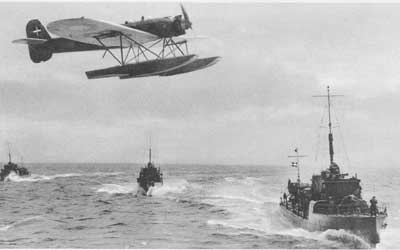
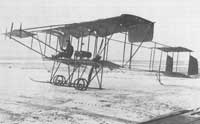
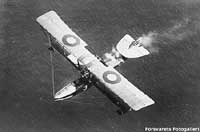
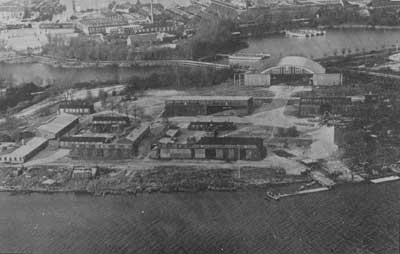
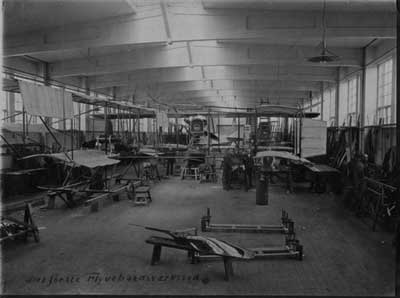
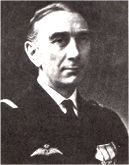
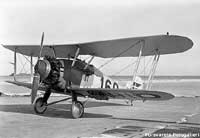

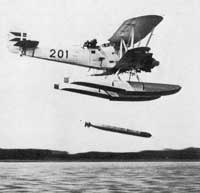
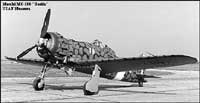
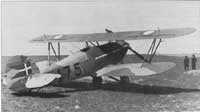
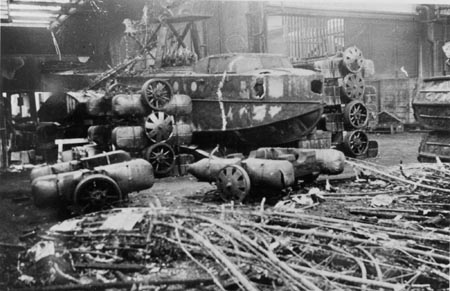
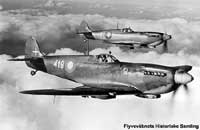
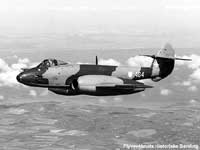
-X.jpg)
